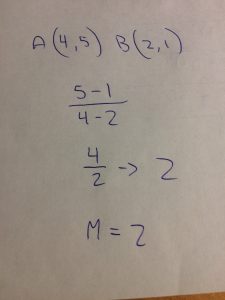Invictus
Written by William Ernest:
Out of the night that covers me,
Black as the Pit from pole to pole,
I thank whatever gods may be
For my unconquerable soul.
In the fell clutch of circumstance
I have not winced nor cried aloud.
Under the bludgeonings of chance
My head is bloody, but unbowed.
Beyond this place of wrath and tears
Looms but the horror of the shade,
And yet the menace of the years
Finds, and shall find me, unafraid.
It matters not how strait the gate,
How charged with punishments the scroll,
I am the master of my fate:
I am the captain of my soul.
Reading of the poem:
Poem Analysis:
Literal Meaning
A man is remaining courageous while facing death.
Imagery
1 Image: “I am the captain of my soul” (Line 16).
Meaning: Ernest is using the word captain to demonstrate to the reader that he is in complete control of his soul, as captains of a ship have rule over all other individuals.
2. Image: “I have not winced nor cried aloud” (Line 6).
Meaning: The speaker is remaining quiet, and simply accepting the fact that death is upon him, as opposed to fighting it. He is aware that he cannot escape death, and therefore remains courageous and noble.
3. Image: “In the fell clutch of circumstance” (Line 5).
Meaning: Death is imminent for the speaker, and it is inescapable. This fills the reader with a sense of dread because they now know that his fate is sealed.
Lyric Qualities
1. Lyric Device: “It matters not how straight the gate” (Line 13). (Rhyme)
Meaning: As the speaker is dying, he is not concerned with what the afterlife has to offer him, good or bad, as he believes that he controls his own fate and destiny.
2. Lyric Device: “My head is bloody, but unbowed” (Line 8). Consonance using the letter B
Meaning: Despite the speaker’s physical struggles and pain, his spirit remains strong and he holds his head high.
Figurative Meaning
- Figurative Device: “Looms but the horror of the shade” (Line 10).
Meaning: The dark shade is a symbol for death, as shade is created when the sun goes down. The sun represents his life, and as it fizzles out, shade reigns over all.
2. Figurative Device: “Black as the pit from pole to pole” (Line 2). Simile
Meaning: The speaker’s world is fading away, leaving him in nothing but darkness as death seizes his spirit. He compares the world to the obscure darkness of a pit, that covers the earth from one end to the other.
- Figurative Device: “How charged with punishments the scroll” (Line 14). (Allusion)
Meaning: As he is dying, the speaker continues to allude to the afterlife, heaven and hell. He is not anxious about the direction of his soul’s fate, as he believes that whether he enters the gates of heaven, or is punished in hell, he will be able to persevere, in spite of the circumstances.
Theme
The themes of the poem are perseverance and courage. That no matter one’s situation, they are in control of their own fate.



